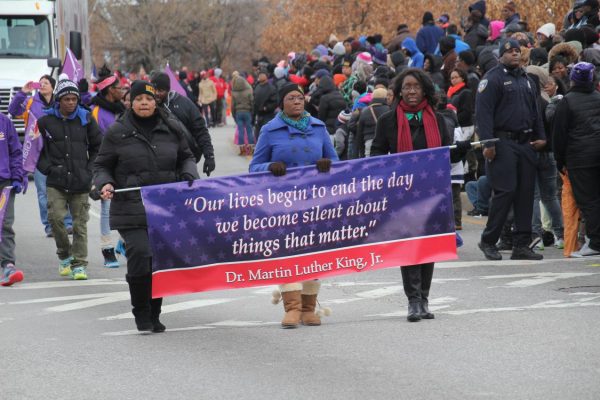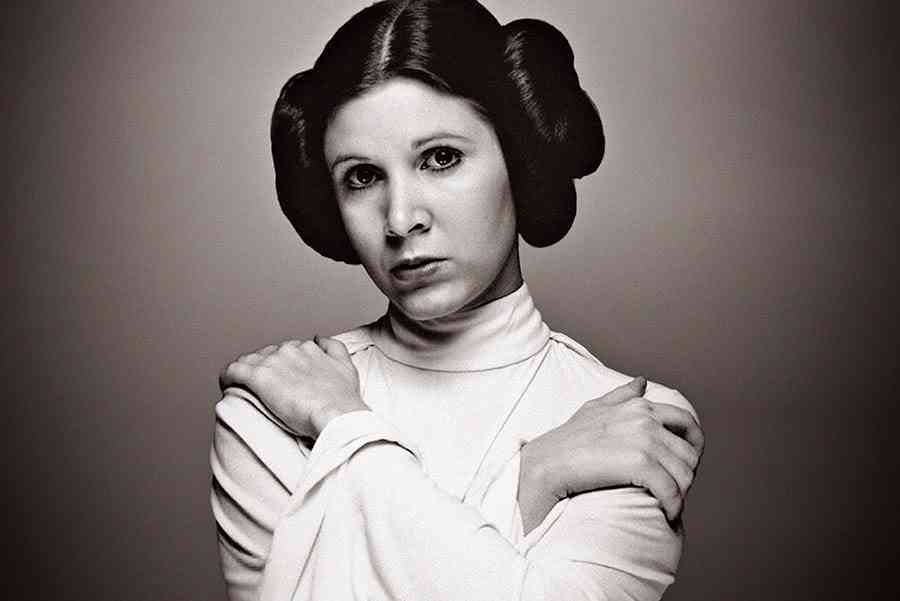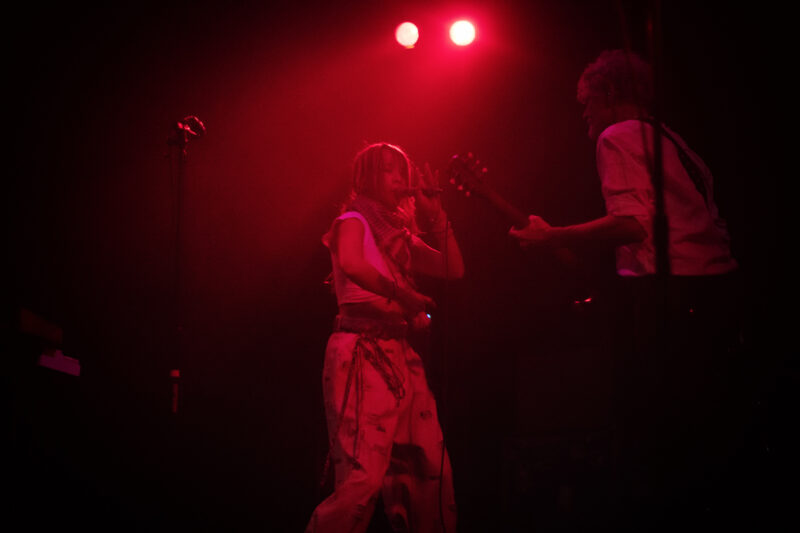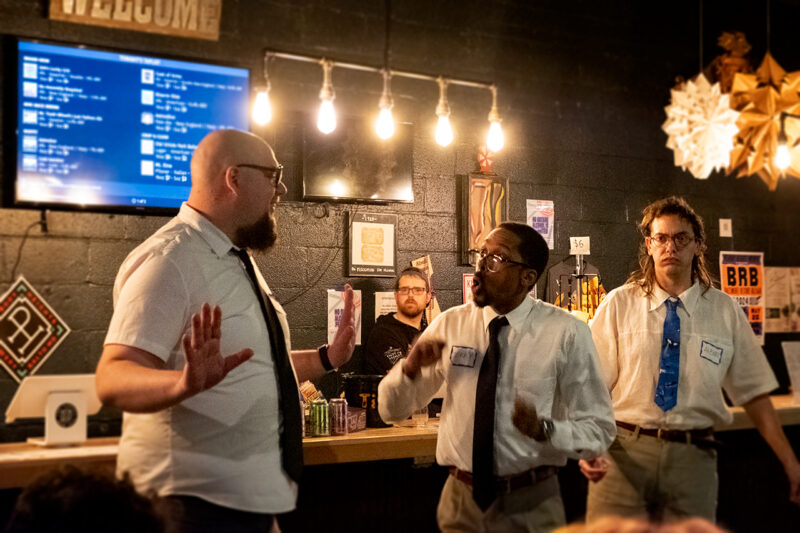The Far Reaching and Unintended Influences of Art on Life by Cara Ober
Since her death on December 27, Carrie Fisher has been on my mind. While my rational brain understands that the artist is NOT the art, I have a hard time separating Carrie Fisher, the actress, writer, and mental health advocate, from the character she played in the Star Wars films of my childhood.
When good art is made, alchemy occurs: the artist is fused, in some way, to their work, which grows exponentially and organically beyond the edges of the human being that made it and into the hearts and minds of others. In the case of Princess Leia, that energy impacted the whole world, and especially mine.
As a young girl playing with the neighborhood boys, there was no other role I could play, or wanted to play, besides Princess Leia in Star Wars because it was the only way I could be equally, unapologetically as powerful as the male characters.
Princess Leia was never a damsel in distress. She never expressed fear. She never hesitated from speaking her mind or being a bitch, insulting her enemies and sometimes those she loved best. She was a wiseass. She was a warrior. And she was a killer, just like everyone else in those films. She was physically tiny, brown-eyed and brown-haired, and her character never acted intimidated in her female-ness, and was never disparaged by other characters for it, either. She simply was who she was, and allowed to function as such. This is still incredibly rare for a woman, in outer space films or in real life.

In the American 1970s of Barbies and Daisey Duke, Princess Leia was nothing short of a miracle. The fact that she is a fictional character, portrayed by an actress, given stilted and obvious dialogue at times, is irrelevant to her power, especially over the imaginations of young women.
There is no one else who could have portrayed her like Carrie Fisher: authentic, vulnerable, funny, and fearless. Bringing this vision to life and making it believable has given me, and millions of women my age, the opportunity to internalize these qualities in my own identity. Carrie Fisher made this possibility real for me. Whether I like it or not (and I like it) ‘What Would Princess Leia Do?’ is a mantra that repeats in my head nearly every day. The other mantra that has recently shown up and refused to leave are Paul Simon’s lyrics.
I knew that he and Carrie Fisher were together for about a decade, married, and then divorced after less than a year, but I never realized that his album, Graceland, released when I was in middle school, was mostly written about their failed relationship. More than any other, this album influenced me as an artist and taught me what I valued most from visual, as well as music and literary art: metaphor, poetic language, a self-depreciating irony, and a bittersweet fusing of love and pain.
Now realizing that Carrie Fisher, my Carrie Fisher, was at the center of the music that has fed me creatively for twenty years, it has become so much more precious.
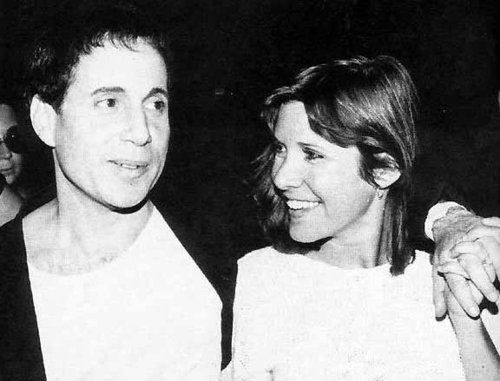 Paul Simon and Carrie Fisher
Paul Simon and Carrie Fisher
I cannot get the song “Hearts and Bones” (from the album Negotiations and Love Songs) out of my head. Listen and see if you can.
Two people were married / The act was outrageous / The bride was contagious / She burned like a bride
These events may have had some effect / On the man with the girl by his side
The arc of a love affair / His hands rolling down her hair
Love like lightning shaking till it moans / Hearts and bones
Hearts and bones
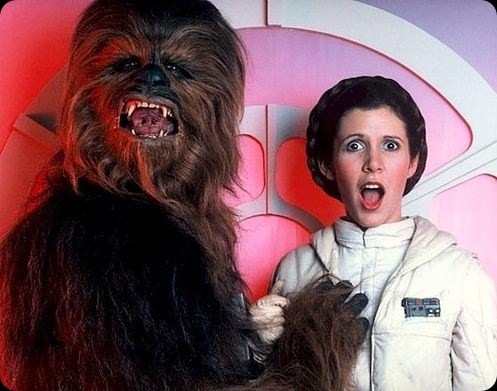
Over the years, I loved Postcards from the Edge, and enjoyed Fisher in Woody Allen’s Hannah and Her Sisters and Nora Ephron’s When Harry Met Sally, but I never loved those characters the way I loved Princess Leia.
In Star Wars, at least in part, it’s her role as an archetypal hero in a familiar epic battle, and that this narrative is embedded in our collective human DNA all the way back to Greek mythology and eons before. Although the plot is familiar, you would be hard-pressed to find a female in any historic odyssey who existed of her own volition, in a role independent from or superior to a male character. Princess Leia was a new option inserted into mythic architecture; her presence created room for people like me to feel included finally, and not window dressing. Princess Leia emerged within a collective archetypal structure as an empowered, dynamic female figure and, whether most men realize it or not, she changed the story forever.
For this reason, I was thrilled to see Fisher in the 2016 Force Awakens, as General Leia Organa. There were no pretty dresses for this princess and no magic fountains of youth, either.
Step aside from the multitude of explosions and re-heated plot lines and consider: How rare is it to see a powerful older woman depicted in fantasy film who isn’t some sort of creepy crone or witch? As numerous trolls gleefully pointed out on Twitter, Carrie Fisher had gotten old, which is a taboo for women in America. How dare she become soft and wrinkly over the past thirty years? Why hadn’t she spent the last few decades doing Pilates and eating wheat grass??
Being seen, and showing up in a powerful, yet also vulnerable, role was another revolutionary act for the actress and the character. In this role, she has again, possibly unwittingly, become a pop feminist icon for my generation as we inevitably age.
 Still a badass! General Leia, I love you.
Still a badass! General Leia, I love you.
For me, Force Awakens was finally a film made in the spirit of the three original Star Wars movies I loved as a kid, after those horribly unwatchable prequels. It had all the dizzying action, big explosions, nail-biting missions, as well as humorous quips and acknowledgement of human weakness, which all combined into something much larger than the sum of the parts.
Again, a powerful female takes a leading role in Rae, with Carrie Fisher functioning as an imperfect, yet resolute, leader, whose personal failings as a mother and romantic partner present another level of complexity. Thankfully, General Leia wasn’t some predictable ‘older woman’ character, sharing platitudes and wisdom from the sidelines. Rather, her character was unresolved – she’d made mistakes! lots of them! – and actively engaged, still leading the fight against the Empire.
In America today, it’s incredibly difficult to be both a mother and a professional leader. Our national policies and social structures make it this way on purpose. It’s called “the ambition gap” by some, where women must choose family or profession, and it effectively banishes a majority of older women from leading roles and the public eye. Bringing Carrie Fisher back for this role was a no-brainer for casting, but her actual character, a leader who was both brave and imperfect, was hugely significant, even just as a visual symbol in the back of our minds.
In the 2017 post-election hangover where a smart, highly competent, and experienced female leader was defeated by a know-nothing male fraud, there are few obvious examples of highly successful women over a certain age in leadership roles and we need them desperately.
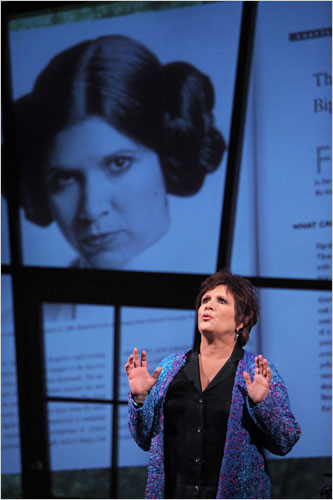 On stage during Wishful Drinking
On stage during Wishful Drinking
I recently watched Wishful Drinking on HBO, just to get a sense of Carrie Fisher as a human being, realizing that she’s spent a lifetime struggling with addiction, celebrity, and mental health. The show was filmed in 2010, before The Force Awakens made Fisher lose 50 pounds and head back to the big screen for a comeback. The one hour stand-up comedy, with visual aids, chronicles Fisher’s life and relationships, personal and professional, and it’s entertaining and engaging, but not great.
Fisher is clever and confident, possibly coked up, and you gain an intimate sense of her perspective and life’s events. For me, this live comedy show exposed the very real disparity between the artist and her art. She focused a lot on her fucked up childhood in Hollywood and her relationship with her actress mother, Debbie Reynolds, which was spirited and contentious. A central portion of the show is devoted to her role as Princess Leia in Star Wars and (spoiler alert) she dons a silly side-bun wig while she delivers it. On the whole, this part of the show made me sad.
I wanted to alternatively shake and hug Fisher while she delivered this part, because she got it all wrong. Her schtick for 95% of the jokes in the program were self-depreciating, so this was to be expected, but it hurt just the same. It was this part of the show that exposed the price she paid personally, for her role as Princess Leia, much of it from self-doubt and insecurity. She belittled her own performance, noting an abundance of lipgloss in the galaxy and sharing George Lucas’s claim that she couldn’t wear a bra under her white robes, because underwear didn’t exist in space. She pointed out an inconsistent British accent that crept into her performance at times, suggesting an inexperienced actress in over her head.
I’ve never claimed that Star Wars was sophisticated or high art, but Fisher portrayed it as a campy, sci-fi wannabe has-been, rather than the beloved, global blockbuster it is. She belittled the film and her own role within it for a few laughs.
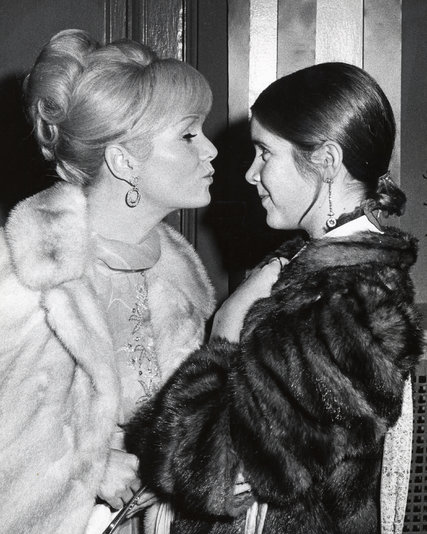 Mother Debbie Reynolds with daughter Carrie Fisher
Mother Debbie Reynolds with daughter Carrie Fisher
It was like hearing all the critics who took cheap shots at her over the years, parroted out of her own mouth. It was as if all the people who had been jealous of her success, not just as an actress in a film, but as a pop cultural icon, had whispered demeaning things in her ears all these years, and she’d believed it. I wanted to shake her and say, “Carrie NO! This is NOT how it is, not how it was. You are amazing and your work matters. You have had a lasting impact on women, on me. You are powerful!” And it was obvious, at least at the time of taping this show, that she was broken by her own life’s experiences, humbled by her own mental health and addiction issues, and not able to see her own strength.
The one story I did enjoy, after a blow up sex doll version of ‘slave Leia’ appeared on stage, was her acknowledgement that she was uncomfortable taking off most of her clothes in that role. She didn’t want to become a sex symbol and wasn’t thrilled about this development in Leia’s character. However, remembering her description to the Wall Street Journal, that ‘slave Leia’ took her chain and strangled her enslaver with it was satisfying, even in the midst of belittling her success for comedic effect.

Maybe this vulnerability and humility, even self-depreciation, makes an artist better at what they do? I am not sure, although I don’t trust anyone who sells themselves as perfect or presents simple answers with no questions.
Carrie Fisher has taught me by example that it’s not necessary for an artist to know, or even believe in, their own power or success. She was a part of something larger, a collective structure that enabled her to perform a certain role at a certain time, in conjunction with others, to capture the imaginations of a generation, both in Star Wars as an actress and within her personal life as a muse to Paul Simon.
Fisher simply said YES and submitted her own talents into projects and relationships that transformed her into someone that people like me clearly needed. For any artist, especially a female one who has chosen to procreate, Fisher’s willingness to surrender to the creative process, to be vulnerable to failure and critics, is her most powerful example.
Life is imperfect, but sometimes art can be perfect. This is how we live on in the hearts and minds of others. “As my friend, the dear departed Princess Leia said to me once, ‘Take your broken heart, make it into art,'” said Meryl Streep in her Golden Globes lifetime achievement award speech, succinctly invoking Fisher’s legacy as an artist.
I still have all my original Star Wars figures from the 1980s and my son plays with them often. I have five Princess Leia figures: from Star Wars, Empire Hoth, Empire Cloud City, Jedi bounty hunter, and Jedi Endor Moon. Although toy manufacturers are still slow to grasp the appeal of female characters and female toys for both boys and girls, my son will not be limited by their lack of vision. It is important to me that he will know that women can be powerful warriors.
For those who love Star Wars, the force will always be with us and Fisher’s role as Princess Leia will always be revered. Thank you, Carrie, for making room in the galaxy for fierce, foul-mouthed women. May the force be with you.
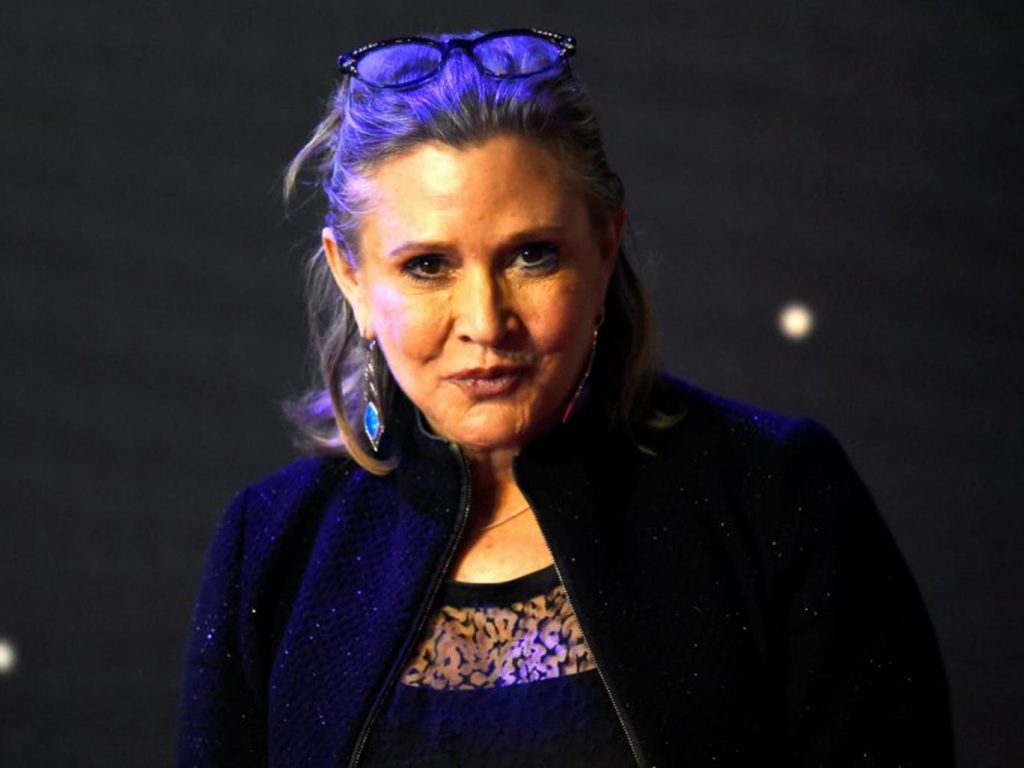

********
Cara Ober is a Baltimore-based artist Founding Editor at BmoreArt.

